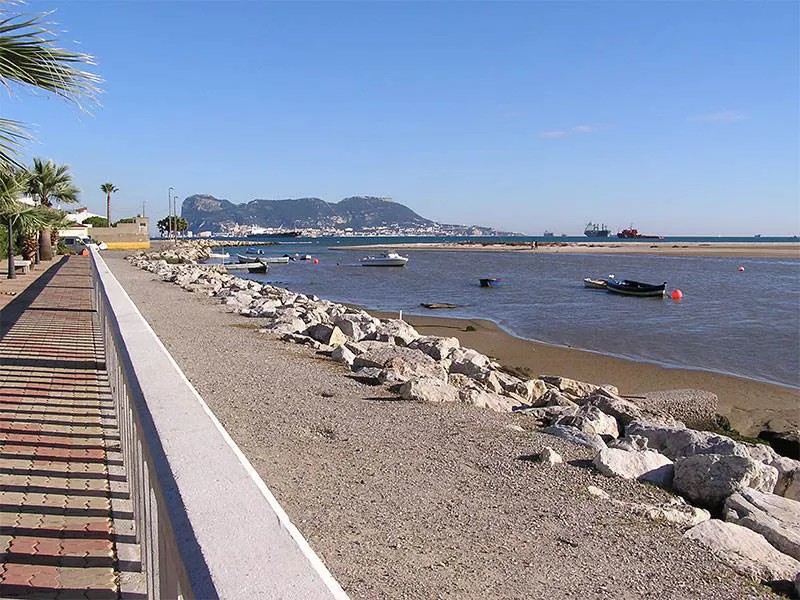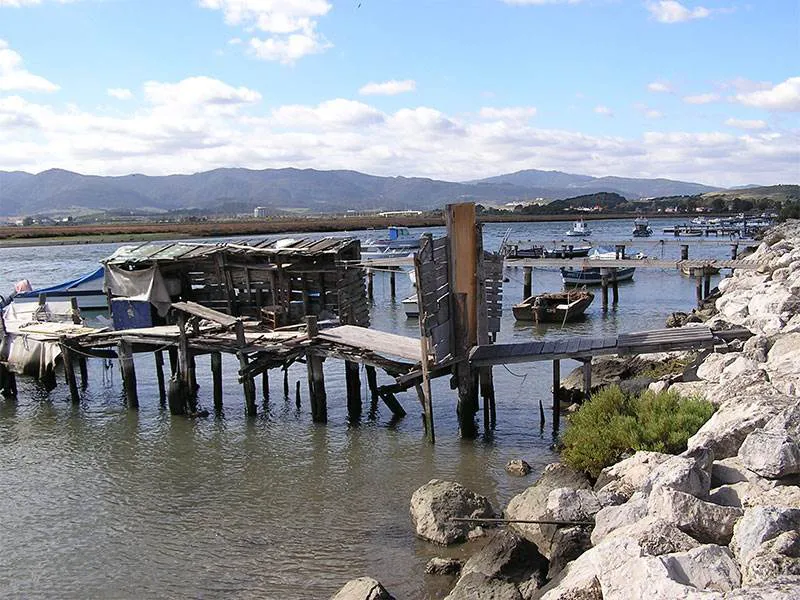Palmones was named Gastronomic Centre of the Campo de Gibraltar in 2004, Palmones is a fishing town on an idyllic estuary that empties into the Bay of Gibraltar
By Nick Nutter | Updated 25 Aug 2022 | Cádiz | Villages |
Login to add to YOUR Favourites or Read Later


‘There is nothing, absolutely nothing, half so much worth doing as simply messing about in boats.’
As water rat said to mole, "Believe me, my young friend, there is nothing–absolutely nothing–half so much worth doing as simply messing about in boats." Much of the population of Palmones in the municipality of Los Barrios would no doubt agree with that sentiment.


Paseo at Palmones
Sat on the north bank of the Rio Palmones the town of Palmones looks out over the wide river estuary, which is sheltered from the worst of the weather by a sand bar, to the gullies and islands on the south bank that make up the Marismas of the Rio Palomes, a declared Natural Site. Fisherman's cottages front the seawall and beach overlooking Algeciras Bay whilst their boats are moored to shanty style homemade piers, some even sporting a locked front door, jutting out into the stream, their inshore ends firmly lashed to rings in the wall. The piers are themselves fascinating, manufactured from driftwood and any other scraps to hand. Some sport roofs, others are at crazy angles, others are as neglected and as sad as the weed-shrouded boats sunk beside them. They would be the envy of those who prefer to secure their boats in the mud berths of the Hamble or Wyre in the UK.


Fishermen's wharves
The tide is flooding into the estuary and a dinghy with small outboard putters past. Its sole occupant is whistling a soft tune as he is bombed right and left by unheeding gannets spearing into the water for the small fry brought in with the tide. Soon the only view of him is his head with its red baseball cap just seen above the reeds on the islands. The hundreds of herons mark his passage, swivelling their necks in perfect synchronicity, totally unmoved by his presence. Not so happy are the egrets that launch themselves indignantly into the air ahead of the boat in a cloud of snow-white wings and breasts, only to circle and land noisily in a flurry once it has gone.


Palmones plaza
Yet another boat, this one a small fishing boat, casts off and makes its way sedately to the fishing quay upriver. Its cigar-sporting captain, in a threadbare sweater, stands with one hand nonchalant on the wheel but ever conscious of the snorkel diver who is in midstream searching for the cockles and muscles from the mud and rocks on the riverbed. With a slight twist of the wrist, he manoeuvres in plenty of time and chugs safely on.


Egrets
A group of fishermen line the wall at its seaward end casting lugworms into the rapid current for sea bass. They enviously watch a gull on a rock across the tide who has managed to trap one all to himself that would feed a family of four. The gull takes stabbing bites of the fish that he holds down with one large webbed foot scanning the sky warily for competition whilst he swallows.


Heron
It is not always idyllic though. On occasion, the bay is polluted with oil from one of the tankers or the detritus from the bilges of one of the many coasters and ocean-going container ships anchored in the bay. When that happens a bright red boom, designed to contain oil, blocks the river’s passage to Algeciras Bay. The fishermen and their boats are confined to the estuary whilst overhead helicopters and planes monitor the spread of the slick and onshore lorries remove hundreds of tons of polluted sand from the long beach that runs for three kilometres south of the estuary to Rinconcillo and beyond to Algeciras.
On any day Gibraltar Bay, only 6 kilometres wide east to west at its entrance and 8 kilometres in depth to the north, is packed with vessels of all sorts and sizes waiting to enter Algeciras, the 7th busiest container port in Europe. They arrive from all over the world and fly the flags of the dozens of countries in which they are registered. Fast hydrofoils and slower vehicle transporters ply their trade across the Strait to Tangiers. Oil and gas carriers wait their turn to be discharged, waited on by lighters, and the container ships queue in an orderly fashion. Pilot and Guardia boats buzz around the throng keeping order whilst wind kiters skim between the ships. On the eastern side of the Bay, a cruise ship manoeuvres like a fussy crinolined aunt into the Port of Gibraltar, packed with tourists thronging the rails, gazing at the Rock that dominates the landscape and fascinated by probably the busiest seascape they have ever seen.
In 2004, primarily due to the number and quality of its fish restaurants, Palmones was named 'Gastronomic Centre of the Campo de Gibraltar'. Ratty would have approved, because the second-best thing worth doing is sitting with a fantastic fish lunch and a bottle of very cold, dry, white wine watching others messing about in boats.